An Insider’s Look: Local Festivals and Events in the Dominican Republic 2025
Exploring the Vibrant Culture of Dominican Festivals
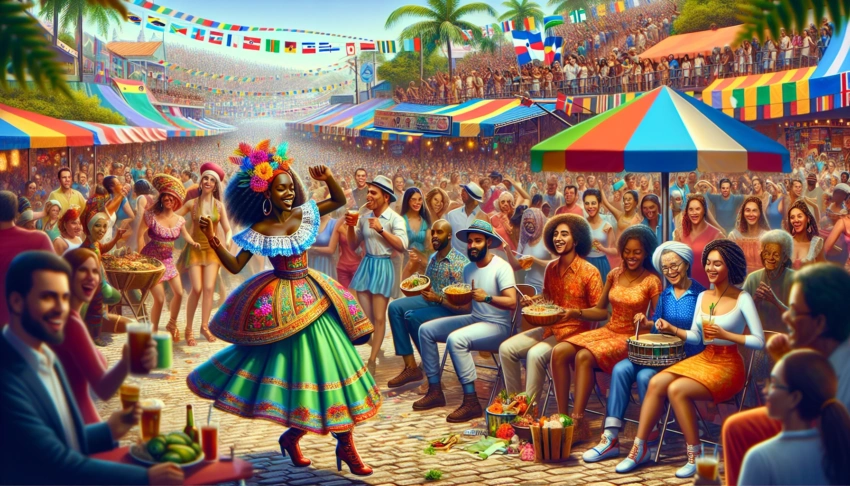
An Insider’s Look: Local Festivals and Events in the Dominican Republic 2025
The Dominican Republic is a kaleidoscope of vibrant colors, pulsating rhythms, and spirited celebrations. At the heart of this lively country are its festivals, which offer a window into the soul of its people and their rich cultural tapestry.
1. Historical Background of Dominican Festivals
The history of Dominican festivals is a fascinating mosaic woven from various cultural and historical threads. These festivals trace their roots back to the Taíno people, the island’s original inhabitants, who celebrated the agrarian cycles with rituals and ceremonies. The arrival of Spanish colonizers introduced Catholic traditions, such as Christmas and Easter, which were later infused with African influences brought by enslaved peoples. This blend of Taíno, Spanish, and African elements has given rise to a unique festival culture that reflects the Dominican Republic’s complex history.
One notable example is the Carnival, which dates back to the colonial era. Initially a Catholic celebration, it has evolved into a colorful and exuberant expression of Dominican identity, featuring a blend of indigenous and African music, dance, and costumes. Over the centuries, the festival has adapted to incorporate modern influences while preserving its historical roots.
2. Cultural Significance and Traditions
Dominican festivals are a testament to the country’s cultural richness and diversity. Each festival is an opportunity for Dominicans to honor their history, express their artistic talents, and strengthen communal bonds. For instance, the Merengue Festival in Santo Domingo is a celebration of the national dance and music that is deeply ingrained in the Dominican soul. This festival not only showcases the island’s musical prowess but also serves as a reminder of the resilience and creativity of its people.
Traditions such as the symbolic use of masks during Carnival symbolize the blending of cultural influences and the freedom of expression. These masks often feature exaggerated features and bright colors, representing various historical and mythical figures. Participants take great pride in crafting these elaborate costumes, which are passed down through generations, preserving the stories and customs of their ancestors.
3. Diversity and Inclusion in Festivals
In the Dominican Republic, festivals are a celebration of diversity and inclusion, reflecting the mosaic of cultures that make up the nation. From the Afro-Dominican communities in the south to the Spanish-influenced towns in the north, each region offers its own unique take on traditional celebrations. These events provide a platform for different communities to showcase their cultural heritage and foster mutual understanding and respect.
The Guloya Festival in San Pedro de Macorís, for example, highlights the Afro-Caribbean heritage of the region. This festival features vibrant dances and music that honor the African roots of the Dominican people. Similarly, the Jewish community in Sosúa holds its own cultural events, celebrating their traditions while contributing to the overall tapestry of Dominican festivals.
These festivals not only highlight the Dominican Republic’s rich cultural diversity but also serve as a reminder of the power of unity and inclusivity. As you explore these vibrant celebrations, you’ll discover the true essence of the Dominican spirit—a spirit that welcomes everyone with open arms.
2025 Festival Calendar Highlights

Punta Cana
As the year 2025 unfolds, the Dominican Republic is set to dazzle with its spectacular lineup of festivals that celebrate the nation’s vibrant culture and heritage. From the pulsating rhythms of Merengue to the colorful parades of Carnival, there’s something for everyone to experience and enjoy.
1. Carnival de la Vega
Every February, the city of La Vega transforms into a kaleidoscope of color and sound, drawing visitors from all over the world to participate in one of the Dominican Republic’s most iconic celebrations. The Carnival de la Vega is a riotous blend of music, dance, and elaborate costumes that showcase the nation’s rich cultural heritage. This festival, rooted in pre-Lenten traditions, is famous for its vibrant parades featuring menacing Diablos Cojuelos (Limping Devils) who playfully chase spectators through the streets.
The origins of this carnival date back to the 16th century, and it has evolved into a significant cultural event that embodies the spirit of the Dominican people. Visitors can expect to be swept up in the contagious energy, experiencing live music, traditional foods, and a sense of community that is truly unbeatable. To make the most of your visit, be sure to arrive early to find a good spot for viewing the parades, and don’t forget your camera to capture the unforgettable moments.
2. Merengue Festival in Santo Domingo
Nothing says “Dominican Republic” quite like Merengue, the lively genre of music that has become synonymous with the country’s identity. The Merengue Festival in Santo Domingo is a must-attend event for music enthusiasts and culture vultures alike.
Held in the bustling capital city, this festival celebrates the energetic and fast-paced rhythms of Merengue with live performances from renowned musicians and bands. The streets come alive with the sounds of trumpets, drums, and accordions, creating an irresistible atmosphere that beckons you to dance. For those keen to learn the Merengue steps, there are often dance workshops and classes available throughout the festival.
Beyond the music, the festival is an excellent opportunity to explore Santo Domingo’s historic charm. Visitors can wander through the Colonial Zone, a UNESCO World Heritage site, and indulge in local delicacies from street vendors. It’s a week of music, dance, and cultural immersion that promises to leave you tapping your feet long after the festival ends.
Our Best Tours in Punta Cana
While you’re soaking up the cultural delights of the Merengue Festival, why not add an extra layer of adventure to your trip? Check out our exclusive tours in Punta Cana that offer unique ways to explore the Dominican Republic.
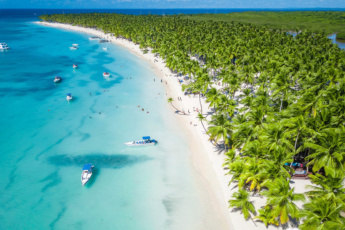
Saona Island Excursion - Caribbean Paradise
from $75 Read more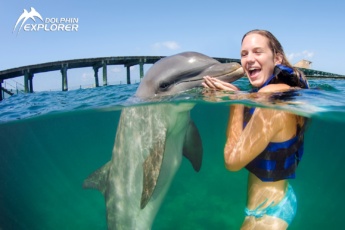
Swimming with Dolphins in Punta Cana - Top Adventure 2025 (50 minutes)
from $149 Read more3. Semana Santa Celebrations
Semana Santa, or Holy Week, is a deeply spiritual and culturally significant event in the Dominican Republic, observed with a unique blend of religious reverence and local traditions. Taking place during the week leading up to Easter, Semana Santa is marked by processions, reenactments, and various religious ceremonies.
In cities and towns across the country, you’ll witness solemn processions featuring statues of religious figures, accompanied by devotees in traditional garb. These processions, often accompanied by music and prayer, create a profound atmosphere that resonates with both locals and visitors. In addition to the religious observances, Semana Santa is also a time for family gatherings and festive meals, where traditional dishes like habichuelas con dulce (sweet beans) are served.
For travelers, Semana Santa offers a unique opportunity to experience the Dominican Republic’s religious and cultural depth. Whether you’re interested in the historical significance of the ceremonies or simply wish to observe the local customs, Semana Santa is an event that provides a meaningful glimpse into the heart of Dominican life.
Hidden Gems: Lesser-Known Local Events
While the Dominican Republic is renowned for its major festivals, there’s a treasure trove of lesser-known events that offer a captivating glimpse into the country’s rich cultural diversity. These hidden gems provide an intimate setting to experience authentic local traditions, away from the hustle and bustle of the more famous celebrations. If you’re seeking to uncover the soul of the Dominican Republic in 2025, these events are not to be missed.
1. Bonao’s Festival of the Flowers
Nestled in the heart of the Dominican Republic, the town of Bonao bursts into a riot of colors during its Festival of the Flowers. This vibrant celebration is a feast for the senses, with floral parades, music, and dance that showcase the region’s abundant natural beauty and artistic heritage. Held annually in May, the festival transforms the streets into a living canvas of floral artistry. Locals take great pride in displaying intricate flower arrangements that reflect both creativity and cultural stories.
One of the festival’s highlights is the Floral Parade, where floats adorned with thousands of blossoms glide through the town. The festival is not just about florals; it’s a celebration of life and community, featuring folk music, traditional dance performances, and local cuisine. It’s a perfect opportunity for visitors to immerse themselves in the Dominican way of life, engage with friendly locals, and perhaps even partake in the joyful dances that are a hallmark of this event.
2. Cultural Day in San Pedro de Macorís
San Pedro de Macorís may not be the first place that comes to mind when thinking of cultural hubs, but its Cultural Day is a testament to the vibrant and diverse heritage of the area. Held in November, this event is a celebration of the town’s rich multicultural roots, with influences from African, Taino, and European heritages.
The day is packed with performances ranging from Afro-Dominican music and dance to dramatic reenactments of historical events. Visitors are treated to a variety of cultural exhibits, including art galleries and craft markets showcasing local artisans. The event also features culinary tours that allow visitors to sample traditional dishes like mangú and sancocho, giving a taste of the local flavors that define Dominican cuisine.
What makes Cultural Day particularly special is the opportunity for meaningful interaction with local artists and historians who share their stories and insights, offering a deeper understanding of the community’s cultural tapestry.
3. Fishing Festival in Samaná
Nestled along the northeastern coast, Samaná is a paradise for nature lovers and those seeking a quieter escape. The annual Fishing Festival held here is a unique celebration that highlights the town’s maritime heritage. Taking place in July, the festival attracts both locals and tourists who participate in various fishing competitions, culinary events, and beach-side festivities.
The festival is a family-friendly event, where visitors can watch or join in on fishing tournaments that showcase the skills of local fishermen. It’s not just about fishing, though. The festival also features cooking contests where chefs prepare freshly caught seafood in traditional Dominican styles. For those not keen on fishing, the festival offers a plethora of activities such as boat tours, snorkeling, and beach parties that celebrate the region’s stunning coastal beauty.
These lesser-known festivals provide a unique lens into the soul of the Dominican Republic. They offer intimate experiences that are rich in culture and tradition, allowing visitors to connect with the local communities on a personal level. Whether you’re a seasoned traveler or a first-time visitor, these hidden gems promise a journey filled with discovery and delight.
Planning Your Visit to Dominican Festivals
Planning a visit to the Dominican Republic for its vibrant festivals can be an exhilarating experience. From the captivating colors of Carnival to the rhythmic beats of Merengue, each event offers a unique glimpse into the heart and soul of the island. Here’s how to make the most of your festival adventure in 2025.
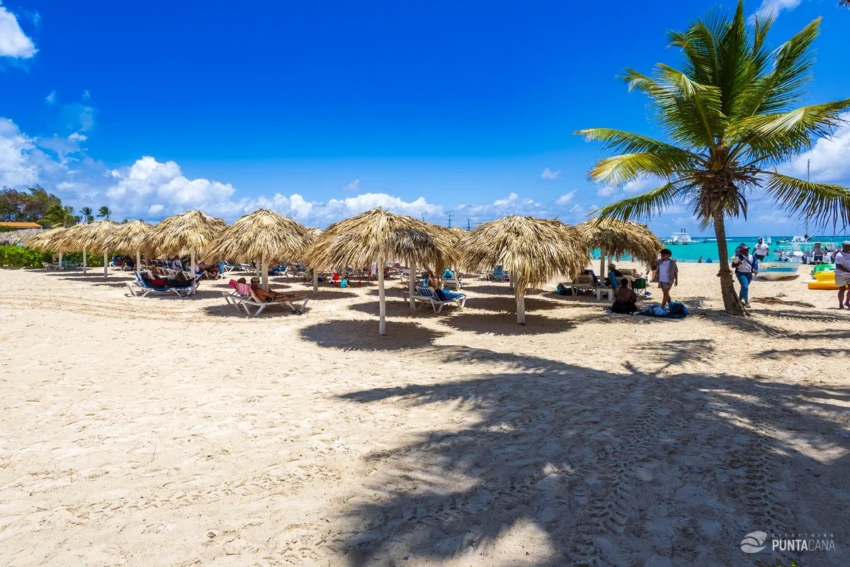
Punta Cana
1. Best Times to Visit and Travel Tips
Choosing the right time to visit the Dominican Republic is crucial, especially if you’re aiming to catch specific festivals. The country’s festival calendar is packed, with major celebrations like Carnival de la Vega in February and the Merengue Festival in July. These months offer a mix of cultural excitement and ideal weather for exploring the island.
- For a more relaxed experience, consider visiting during the shoulder seasons of April to June or September to November. These periods often see fewer tourists, allowing for a more intimate festival experience.
- Ensure you book flights and accommodations in advance, as festival seasons can see a surge in tourism.
- Pack light, breathable clothing, and don’t forget sunscreen. A portable fan or misting spray can be a lifesaver during the hotter months.
2. Accommodation and Transportation
Finding the right place to stay during your festival visit is key to a hassle-free experience. Whether you prefer luxury resorts or cozy guesthouses, the Dominican Republic offers a wide array of accommodations to suit every taste and budget.
Accommodation Options and Their Features
| Type | Average Price (per night) | Features | Location |
|---|---|---|---|
| Luxury Resorts | $200 – $500 | All-inclusive, beachfront, pools | Punta Cana, La Romana |
| Mid-Range Hotels | $80 – $150 | Breakfast, central locations | Santo Domingo, Santiago |
| Budget Guesthouses | $30 – $70 | Local charm, basic amenities | Smaller towns, rural areas |
Transportation in the Dominican Republic can be an adventure in itself. Renting a car offers flexibility but driving can be challenging due to local traffic norms. Buses and public guaguas (shared vans) are affordable options for getting around.
3. Etiquette and What to Expect
Attending a festival in the Dominican Republic means immersing yourself in a lively, friendly, and often crowded environment. Understanding local customs and etiquette will enhance your experience and help you blend in seamlessly.
- Dominicans are known for their hospitality. A warm smile and a friendly greeting go a long way.
- When participating in dance events, follow the lead of locals and feel free to join in. Dance is a big part of the culture, and everyone is welcome.
- Be mindful of personal belongings, especially in crowded areas. Petty theft can occur, so it’s wise to carry only essentials.
Book Your Festival Experience Now
Ready to join the festivities? Check out some of our specially curated tours that offer an insider’s look into these vibrant celebrations. From guided tours during Carnival to immersive experiences at the Merengue Festival, there’s something for every adventurer.

Punta Cana Private Boat Trip at the Best Price - 3-Hour Exclusive Tour with Snorkeling (from Jellyfish to Cabeza de Toro)
from $590 Read more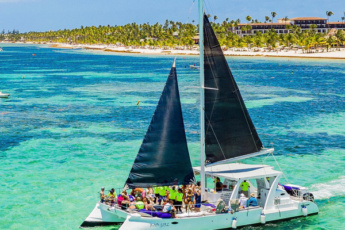
Power Cruise – Punta Cana Party Experience on the Bad Girl Catamaran
from $65 Read moreImpact of Festivals on Local Communities
Festivals in the Dominican Republic are not just vibrant displays of culture and tradition, but they also play a pivotal role in shaping and supporting local communities. From economic benefits to cultural preservation, these events have a profound impact on the livelihoods and cultural fabric of the region.
1. Economic Boost and Tourism
Festivals in the Dominican Republic are a major draw for tourists, significantly boosting the local economy. With events like the Carnival de la Vega attracting thousands of visitors, local businesses flourish as demand for accommodations, food, and souvenirs skyrockets. This influx of visitors contributes to the hospitality industry, with hotels often fully booked and restaurants bustling with patrons eager to taste authentic Dominican cuisine.
Additionally, festivals create seasonal employment opportunities for locals, ranging from event organizers and performers to vendors and artisans selling their crafts. The ripple effect of these events extends beyond the festival grounds, stimulating economic growth in the surrounding areas as well.
Economic Impact Analysis of Dominican Festivals
| Festival | Visitors (approx.) | Economic Contribution (USD) | Employment Opportunities |
|---|---|---|---|
| Carnival de la Vega | 500,000 | $25 million | 5,000+ |
| Merengue Festival | 300,000 | $15 million | 3,000+ |
| Semana Santa | 200,000 | $10 million | 2,000+ |
2. Preservation of Cultural Heritage
Festivals are a living canvas for celebrating and preserving the rich cultural heritage of the Dominican Republic. Through music, dance, and traditional attire, these events keep the spirit of Dominican culture alive and thriving. The Merengue Festival, for instance, showcases the national dance, inviting both locals and tourists to immerse themselves in the rhythm and history of this cultural treasure.
By prioritizing the inclusion of traditional elements, such as folkloric dances and indigenous crafts, festivals serve as a bridge connecting the past with the present. This commitment to cultural preservation ensures that younger generations remain connected to their roots, fostering a sense of pride and identity within the community.
3. Community Involvement and Development
Beyond economic and cultural contributions, festivals in the Dominican Republic are a catalyst for community involvement and development. These events provide a platform for local artists and performers to showcase their talents, fostering a sense of unity and collaboration within the community. Whether through dance troupes, musical groups, or art exhibitions, festivals encourage participation from all corners of society.
Moreover, the planning and execution of these events often involve local government and community organizations, leading to improved infrastructure and public services. The community-driven nature of festivals promotes civic pride and a collective effort to present the best of Dominican culture to the world.
In summary, festivals in the Dominican Republic are more than just celebrations—they are vital components of the socio-economic and cultural landscape. By boosting tourism, preserving heritage, and engaging communities, these events leave an indelible mark on the fabric of local society.
Frequently Asked Questions
What are some of the major festivals in the Dominican Republic in 2025?
In 2025, some major festivals in the Dominican Republic include Carnaval de la Vega, Merengue Festival, and the Santo Domingo International Book Fair. Each of these events offers a unique glimpse into the vibrant culture and traditions of the country.
When does Carnaval de la Vega take place in 2025?
Carnaval de la Vega is traditionally celebrated on Sundays throughout February, with the main events culminating on the last Sunday of the month. In 2025, you can expect the festivities to take place on February 2, 9, 16, 23, and possibly March 2, depending on local scheduling.
What can visitors expect at the Merengue Festival?
Visitors to the Merengue Festival can enjoy an array of live music performances, dance competitions, and cultural exhibitions. The festival is a celebration of the Dominican Republic’s national dance, merengue, and provides an opportunity to experience the joyful and energetic spirit of the local culture.
Is there an entrance fee for the Santo Domingo International Book Fair?
Typically, the Santo Domingo International Book Fair is free to attend, although some specific events or workshops may require a fee. It’s advisable to check the official schedule closer to the event date for any updates or changes regarding entrance fees.
How can I find accommodations during festival times?
During festival periods, accommodation can be in high demand. It’s recommended to book your stay well in advance, especially for popular destinations like Santo Domingo and La Vega. Consider using trusted booking platforms to secure a spot and explore both hotels and local guesthouses for a range of options.
What safety measures should I consider when attending these festivals?
While attending festivals, it’s important to stay aware of your surroundings, keep personal belongings secure, and avoid overly crowded areas if possible. Additionally, follow any guidelines provided by local authorities, especially regarding COVID-19 precautions.
Please note that safety guidelines may change, so it’s wise to check local advisories closer to the event date.
Are there any traditional foods I should try at these events?
Yes, festivals in the Dominican Republic offer a chance to savor local delicacies such as sancocho (a hearty stew), mangu (mashed plantains), and various street foods like empanadas. These dishes provide a taste of the country’s rich culinary heritage.
What transportation options are available during festival times?
Public transportation, including buses and taxis, is generally available during festival times. In major cities, ride-sharing services might also be an option. However, due to increased demand, it’s a good idea to plan your transport ahead and allow extra time for travel.
Can I participate in the festivals as a visitor?
Absolutely! Visitors are welcome to join in the celebrations. Many festivals feature parades, concerts, and cultural performances where everyone can partake. Engaging with locals and respecting cultural norms will enhance your experience.
